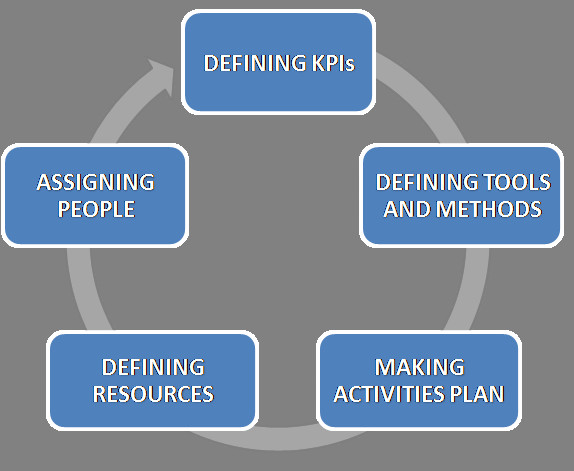Measuring and monitoring the results of your marketing efforts is crucial to understanding the effectiveness of your strategies and making data-driven decisions. Here are some steps to help you measure and monitor the results:
- Define objectives and key performance indicators (KPIs): Clearly define your marketing objectives and identify the KPIs that align with those objectives. For example, if your objective is to increase conversions, your KPIs could include conversion rate, lead generation, sales revenue, or customer acquisition cost.
- Implement analytics tools: Set up and configure web analytics tools such as Google Analytics to track and measure relevant metrics. Install tracking codes on your website, landing pages, and other digital channels to gather data on user behavior, traffic sources, conversions, and other key metrics.
- Track and analyze website traffic: Monitor your website traffic to understand how users are finding and interacting with your content. Analyze metrics such as page views, unique visitors, bounce rates, time on page, and traffic sources. Identify trends, patterns, and areas for improvement based on this data.
- Analyze conversion rates: Measure and analyze conversion rates to assess the effectiveness of your lead generation and sales efforts. Track conversions on key actions, such as form submissions, purchases, or newsletter sign-ups. Identify conversion rate optimization opportunities by analyzing conversion funnels and user behavior.
- Monitor social media engagement: Utilize social media analytics tools to track engagement metrics on your social media platforms. Monitor metrics such as likes, shares, comments, click-through rates, and follower growth. Assess which content types, topics, or campaigns generate the most engagement and adjust your strategy accordingly.
- Assess email marketing performance: Track and analyze email marketing metrics to evaluate the effectiveness of your email campaigns. Monitor metrics such as open rates, click-through rates, conversion rates, and unsubscribe rates. Test different subject lines, content formats, and call-to-actions to optimize your email marketing performance.
- Evaluate advertising campaigns: Measure the performance of your advertising campaigns by tracking metrics such as impressions, click-through rates, conversion rates, and return on ad spend (ROAS). Assess the effectiveness of different ad platforms, targeting options, ad creatives, and messaging to optimize your ad campaigns.
- Use customer feedback: Gather feedback from your customers through surveys, reviews, or customer support interactions. Analyze feedback to gain insights into customer satisfaction, preferences, and areas for improvement. Use this information to refine your marketing strategies and enhance the customer experience.
- Set up regular reporting: Establish a reporting schedule to review and report on your marketing performance regularly. Create customized dashboards or reports that highlight the key metrics and insights relevant to your objectives. Share these reports with stakeholders to keep them informed about progress and success.
- Continuously optimize: Use the insights gained from your data analysis to make data-driven optimizations to your marketing strategies. Test different variations, experiment with new approaches, and iterate based on the results. Continuously monitor and measure the impact of these optimizations to ensure ongoing improvement.
Remember, measuring and monitoring results is an iterative process. Regularly review and analyze data, identify trends and patterns, and make informed decisions based on the insights gained. This will help you optimize your marketing efforts, maximize your return on investment (ROI), and drive continuous improvement
SHARE
